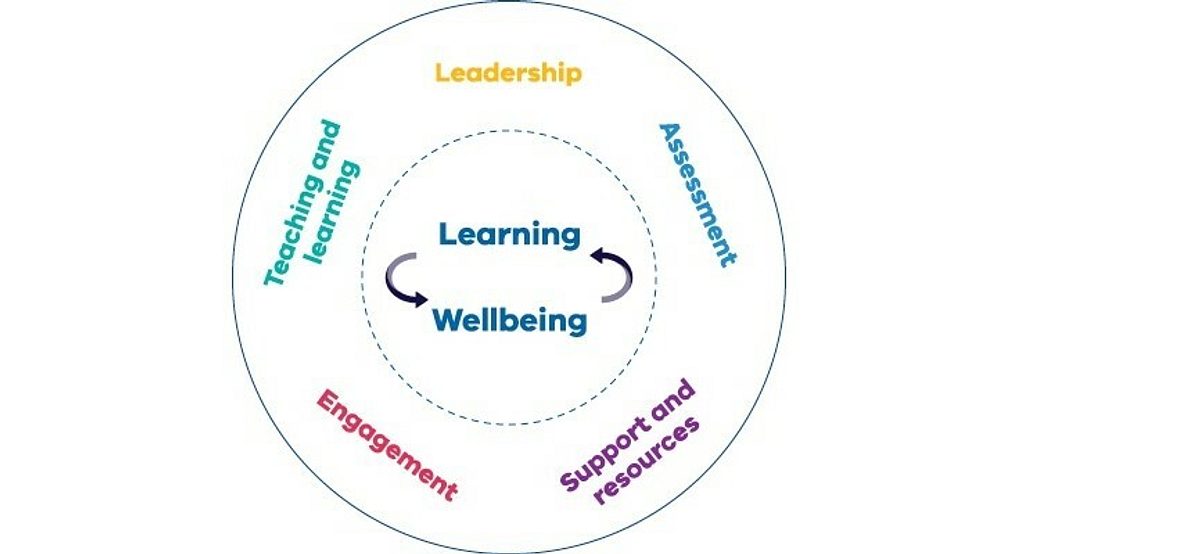
FISO 2.0 sets out five core elements, each containing two dimensions, that together realise the goals of excellence and equity through developing the learning and wellbeing of every Victorian student.

When integrated, these elements build a positive environment through strong relationships that enables all students to become:
- happy, healthy, and resilient
- successful lifelong learners
- active, informed members of just and sustainable communities
Below you will find the approaches within the Teaching & Learning Toolkit aligned to the ten dimensions of FISO 2.0. Given the depth of the domain relating to the High-Impact Teaching Strategies (HITS), a separate, detailed alignment has been conducted.
Find out more about FISO 2.0 from the DET Victoria website, including FISO-related guidance such as the improvement cycle.
The strategic direction and deployment of resources to create shared goals and values; high expectations; and a positive, safe and orderly learning environment.
Behaviour interventions
Extending school time
One to one tuition
Parental engagement
Reducing class size
Small group tuition
Summer schools
Teaching Assistant Interventions
Shared development of a culture of respect and collaboration with positive and supportive relationships between students and staff at the core.
Mentoring
Peer tutoring
Social and emotional learning
Documented teaching and learning program based on the Victorian Curriculum and senior secondary pathways, incorporating extra-curricular programs.
Arts participation
Metacognition and self-regulation
Oral language interventions
Phonics
Reading comprehension strategies
Social and emotional learning
Use of common and subject-specific high impact teaching and learning strategies as part of a shared and responsive teaching and learning model implemented through positive and supportive student-staff relationships.
This dimension relates to the High Impact Teaching Strategies (HITS). Each of the HITS has a separate alignment to the Teaching and Learning Toolkit.
Systematic use of assessment strategies and measurement practices to obtain and provide feedback on student learning growth, attainment and wellbeing capabilities.
Feedback
Metacognition and self-regulation
Systematic use of data and evidence to drive the prioritisation, development, and implementation of actions in schools and classrooms.
Feedback
Individualised instruction
Metacognition and self-regulation
One to one tuition
Small group tuition
Teaching Assistant Interventions
Within-class achievement grouping
Activation of student voice, agency, leadership and learning to strengthen students’ participation and engagement in school.
Collaborative learning approaches
Metacognition and self-regulation
Peer tutoring
Strong relationships and active partnerships between schools and families/carers, communities, and organisations to strengthen students’ participation and engagement in school.
Parental engagement
Responsive, tiered and contextualised approaches and strong relationships to support student learning, wellbeing and inclusion.
Behaviour interventions
Individualised instruction
Mentoring
Metacognition and self-regulation
One to one tuition
Oral language interventions
Small group tuition
Social and emotional learning
Teaching Assistant Interventions
Within-class achievement grouping
Effective use of resources and active partnerships with families/carers, specialist providers and community organisations to provide responsive support to students.